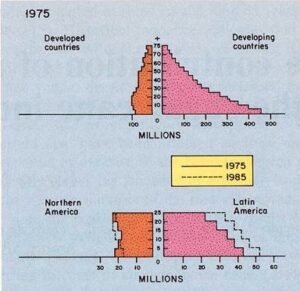Introduction
Science has been a domain of the first world, with more than 78% of all published papers originating from eight countries, the USA, Canada, Britain, Japan, Germany, France, the USSR, and Italy.[1-3] The United States alone is at present responsible for 42.6% of all scientific publications. The share of contribution of the sword word or developing countries to international scientific activities at the same time amounted to less than 3%.[2, 3] This gap between the first word and developing countries resulted from cultural and economic reasons, and until a few years ago since part of a pattern difficult to change. Two factors have contributed to widen the existing gap between developed and developing countries, namely the “secret information” and the “brain drain”. For strategic reasons, a fraction of the knowledge generated by science is not published; this includes space and nuclear physics. The extent of the scientific knowledge, which does not appear in print, is unknown and is difficult to estimate. The brain drain factor on the other hand can be deduced by the increasing number of foreign scientists working in developed countries. In 1988 foreign students with temporary visas in the USA earned 18% of all life science PhD’s awarded by USA colleges and universities. 30% of all physical sciences PhD’s and 45% of all engineering doctorates.[4] The cost for training of most of these students is usually covered by the country of origin.[5] However after they graduate about half of the temporary residents stay in the USA.[4]
This situation is being challenged by an unforeseen demographic factor. With the absence of a population increase in the first world countries there are not enough young people to replace or expand scientific research, this leads to a deadlock: either scientific research stagnates or an alternative system must be defined.
“Scientific development is no longer restricted to academia and starts being the amended also by industry that represents an important productive sector of the country with a strong influence in public opinion.”
This paper analyzes the present situation of scientific research and discusses the changing scenery for science in the future.
The unwritten science
The significant advance in technology in the last few years suggested a comparable increase in scientific knowledge. However, the expected increase of scientific data as measured by the total of scientific publications was absent.[1] The USA was chosen to mirror the situation dueto it’s being the country with the highest rate of scientific publications [1-3] and also the country where more information is available.
“Countries like Brazil cannot support a rapid growth of science in industries without the risk of collapse of scientific research in universities.”
Between the years 1975 and 1985 there has been very little change in the number of published articles in the USA, whereas the number of scientists engaged in research has more than doubled as the expenditure in science tripled (Table 1). Even taking the inflationary factor into account, this would not explain the increase in the number of people working in scientific research. This could mean that research has become more expensive, needing a larger budget and the engagement of more scientists to obtain the scientific information. It should be expected that published papers would show a proportional increase in the number of authors per article a fact that was not observed when a sample of 35 journals (Tables 2 and 3) covering the areas of General Medical and Biological Sciences, Chemistry, Physics, Mathematics, Ecology, and Earth Science was analyzed; an increment of a mere 1.19 was seen (Table 3).
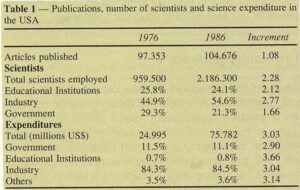
Table 1. Publications, number of scientists and science expenditure in the USA [1, 6]
It is difficult to accept that more money is being spent in unproductive research and inefficient investigators, especially if one considers that a large fraction of science is carried out by industry (Table 1). The other possibility therefore was that not all the science, which is being financed, is becoming public knowledge, part of it belonging either to industry or to government defense. When scientists were distributed based on their source of employment (Table 1), the largest increase in a 10-year interval once in industry are also responsible for 85% of the total amount is spent on research. This might explain the paradox mentioned above.
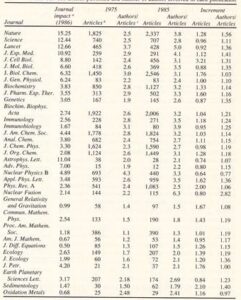
Table 2. Ratio between articles published and number of authors involved in each publication
The control or inaccessibility of information by the industry is essential for the development of “know how”, and its large budgets allied to the new fields of biotechnology and materials science are capable of attracting investigators who would in the past go into areas as far from industry and so open to the production of information as basic sciences.
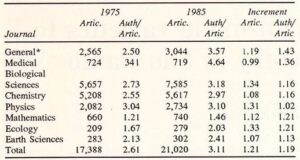
Table 3. Number of authors per publication in different areas of knowledge in 1975 and 1985
The demographic factor
To keep up with the present trend in the next decade, the industrial sector of the first world would need not only to attract more people, but also to find suitable people. Therefore, more graduates should enroll in science and engineering than they are doing now, both to replace and augment the industrial workforce and to replace university faculty members so that more persons could be scientifically trained.[4] Table 4 shows that this increase in job demand has not been paralleled by a proportional increase in the use population and American student enrollment in sciences. As a result the percentage of jobs going to foreigners is increasing in the USA with a high cost to science in developing countries as each third world the student that goes to a developed country to obtain a doctorate degree and does not return represents an enormous economic burden to his country of origin.[5] Despite the situation, foreign scientists are not enough to fill the existing gap (Table 4): as a result, the average age of faculty members in the USA is going up.[5, 6]
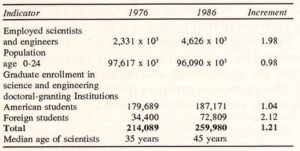
Table 4. Science and technology in the USA [5-8]
The absence of human material could lead industry to a new approach in order to cover the demand; instead of trying to attract scientists and engineers to the main base being under the threat the foreign born workers might return home,[4] they could transfer and install part of their research and development activities in countries with plenty of human potential from where to recruit people (Table 5). This could halt the threat of becoming stationary in terms of development of technology. This migration of science to developing countries could diminish the existing gap and in the long term referred the distribution pattern of the generation of scientific knowledge.
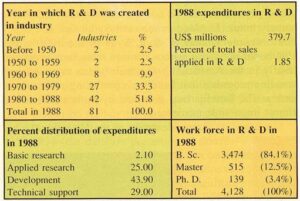
Table 5. Research and development R & D in Brazilian industry
The country of choice
There are some requirements for a country to host industrial research and development. There should be universities to produce appropriately trained people enough human material to justify the investment and the country should be interested in a policy of industrial modernization. This profile is fulfilled by a number of developing countries, including Brazil (Table 5), which is the best known by the authors. In the case of Brazil, there has been an exponential growth in the number of industries that spent money on research and development (Table 5). This is quite a new situation, since in Brazil before 1970 never had such a significant amount of money being spent by multinational or local industries on science.[7] Some examples of this change in policy for research funding are: the industrial sector in Brazil in 1988 (Table 5) and 1989 allocated 380 and $500 million respectively to research and development while the Brazilian government budget for science and technology was $500 million in both 1988 and 1989;[10, 11] in 1988 the multinational companies Rhodia and Pirelli applied 1.5% and 3.5% of the money earned from sales to research and development in Brazil.[10] These are indicators suggesting that through the private sector, a mobilization of science from the first world is already taking place. Scientific development is no longer restricted to academia and starts being the amended also by industry that represents an important productive sector of the country with a strong influence in public opinion. Industry requires that the money paid in taxes be recovered through a better education and a university capable of producing high quality trained people as more graduate and postgraduate personnel are being employed these data indicate that industry might function as a decentralizing factor inducing the mobilization of science from the first world to developing countries mainly as a result off demographic pressure (Figure 1).
“The interdependence between universities and industries requires a careful balance in the distribution of investments and wage policies.”
Finally, it must be pointed out that countries like Brazil cannot support a rapid growth of science in industries without the risk of collapse of scientific research in universities. The interdependence between universities and industries requires a careful balance in the distribution of investments and wage policies. Otherwise, the advantage offered by industry could lead to a move of the few competent scientists found in the universities and public research institutes to industry and consequently to a collapse of the formative system responsible for the training of new scientists.


